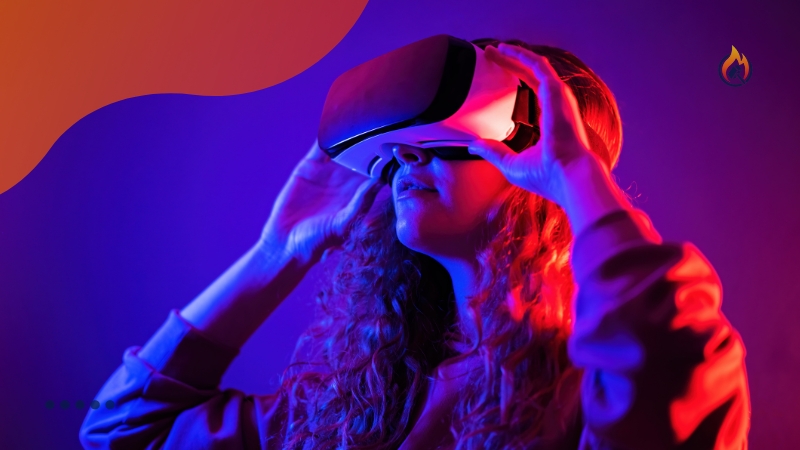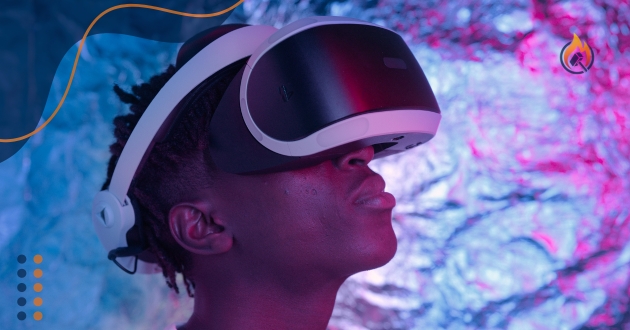Virtual reality gaming platforms are transforming the gaming industry by offering immersive experiences like never before. Unlike traditional gaming consoles, these platforms allow players to physically engage with virtual worlds, making the experience more interactive and dynamic.
Moreover, virtual reality gaming platforms offer opportunities for game developers to create more complex and visually stunning environments. These platforms enable a deeper level of player immersion, which is changing how games are designed and played.
Transitioning from conventional gaming to virtual reality gaming platforms comes with a learning curve for many users, but the rewards are undeniable. From enhancing multiplayer experiences to providing therapeutic uses in healthcare, virtual reality is expanding its reach beyond entertainment.
The Evolution of Virtual Reality Gaming

Virtual reality (VR) gaming has come a long way since its inception. Early attempts at VR were limited in scope and technology, but modern virtual reality gaming platforms have brought the concept into the mainstream.
With improved graphics, motion sensors, and more accessible VR headsets, the gaming experience has never been more captivating.
These platforms not only offer entertainment but are also being used for educational and training purposes.
For example, flight simulators and military training programs have adopted VR gaming technology to enhance realism.
As a result, virtual reality gaming platforms are breaking barriers and extending their application into various industries.
Key Features of Leading VR Gaming Platforms
Immersive Gameplay
One of the primary advantages of virtual reality gaming platforms is the immersive gameplay they offer.
Players are no longer confined to looking at a screen; they are part of the action. Through advanced motion tracking, these platforms allow players to interact with the game world in real time, whether it’s dodging obstacles or picking up objects.
Social and Multiplayer Experiences
Virtual reality is not just a solo adventure. Many virtual reality platforms offer multiplayer experiences, allowing users to interact with others in the virtual world.
This social aspect is transforming how people play games, making VR a communal activity.
The Future of Virtual Reality Gaming
The future of virtual reality platforms looks promising as technological advancements continue to enhance the user experience.
With the rise of 5G and cloud gaming, the potential for more seamless and realistic VR experiences is on the horizon.
Developers are working on improving hardware and software to ensure that virtual reality becomes more accessible and user-friendly.
The Importance of Cybersecurity in Virtual Reality Gaming
As virtual reality gaming platforms continue to rise in popularity, the need for robust security measures becomes more critical.
Many users and developers overlook the importance of protecting these immersive systems from potential cyber threats.
For small developers and startups entering the VR market, understanding the fundamentals of cybersecurity for small businesses is essential.
Ensuring that user data, financial transactions, and in-game assets are safeguarded is paramount to maintaining trust and long-term success in the industry.
Advancements in Virtual Reality Hardware
The development of hardware plays a significant role in the success of virtual reality gaming .
Modern VR headsets, such as Oculus Rift and PlayStation VR, have dramatically improved the quality of virtual experiences.
These devices now feature high-resolution displays, improved motion sensors, and more ergonomic designs, providing users with enhanced comfort and performance during extended gaming sessions.
1. Wireless VR Systems (Virtual reality gaming platforms)
One of the latest innovations is the shift towards wireless VR systems.
Traditional setups required users to be tethered to a console or PC, limiting movement and immersion.
With the introduction of wireless technology, players can now enjoy unrestricted gameplay, which enhances the overall experience.
2. Haptic Feedback Integration
In addition to visual and auditory improvements, haptic feedback systems are becoming more integrated into virtual reality gaming .
These technologies simulate touch, making players feel the impact of actions within the game. From vibrations to full-body haptic suits, these developments are making virtual worlds more tangible.
VR Content Creation and Customization
As VR technology becomes more widespread, so does the demand for personalized content within virtual reality gaming.
Game developers and even players now have the ability to create and modify their virtual worlds, allowing for endless creativity and customization.
1. User-Generated Content (Virtual reality gaming platforms)
Some platforms encourage players to build their own levels, characters, or even entire games.
This user-generated content fosters a strong community and keeps the gaming experience fresh with an ever-growing library of content created by fellow players.
2. Developer Tools
For developers, advanced toolkits and software are available to streamline the creation of VR content. These tools allow for quicker development cycles and more complex game designs, pushing the boundaries of what is possible within virtual reality gaming platforms.
Virtual Reality and Esports (Virtual reality gaming platforms)
The integration of VR into esports is creating new opportunities for competitive gaming. Traditionally, esports has been dominated by 2D games played on consoles or PCs, but virtual reality gaming are slowly making their way into the competitive scene.
1. Immersive Esports Competitions
VR esports tournaments provide a more immersive experience for both players and spectators. In these competitions, players must use physical movements, adding a new level of skill to the gameplay. This creates a dynamic and exciting environment, both online and in live settings.
2. VR Esports Accessibility
As VR technology becomes more affordable, its potential to grow in the esports world is enormous. With the rise of competitive VR games, we may see new genres emerge specifically designed for virtual reality gaming platforms, revolutionizing the esports landscape.
The Role of VR Accessories in Enhancing Gameplay
To elevate the immersive experience of virtual reality gaming platforms, various accessories are being developed to complement the hardware.
One notable innovation is the VR treadmill, which allows players to physically walk or run in the virtual environment, enhancing both realism and interactivity.
Companies like Virtuix are leading the way by creating devices that enable full-body movement in virtual worlds.
These accessories not only improve gameplay but also make VR more engaging by encouraging physical activity, adding a new dimension to how players interact with games.
Conclusion: Virtual reality gaming platforms
In conclusion, virtual reality gaming platforms are reshaping the gaming industry by providing immersive and interactive experiences that go beyond traditional gaming. The advancements in VR hardware, such as wireless systems and haptic feedback, have significantly enhanced player immersion, making virtual environments feel more realistic and engaging.
Moreover, the ability to create and customize content within these platforms has empowered both developers and players, leading to a continuous flow of new and exciting experiences. The integration of VR into esports and the development of accessories, like VR treadmills, are also pushing the boundaries of competitive and immersive gaming.
Despite challenges such as high costs and motion sickness, the future of virtual reality gaming platforms remains bright. With ongoing innovation and a growing community, VR is poised to become an integral part of the gaming world, offering endless possibilities for players and developers alike.


